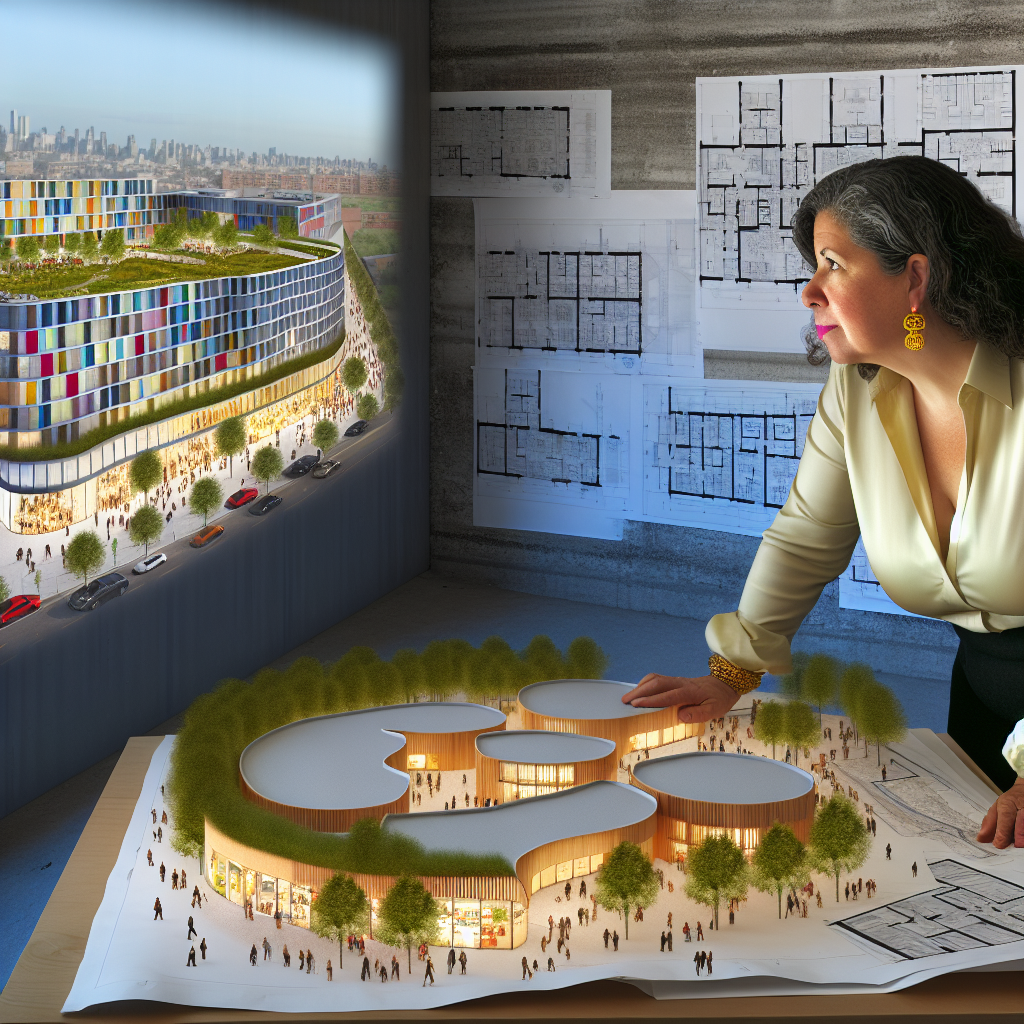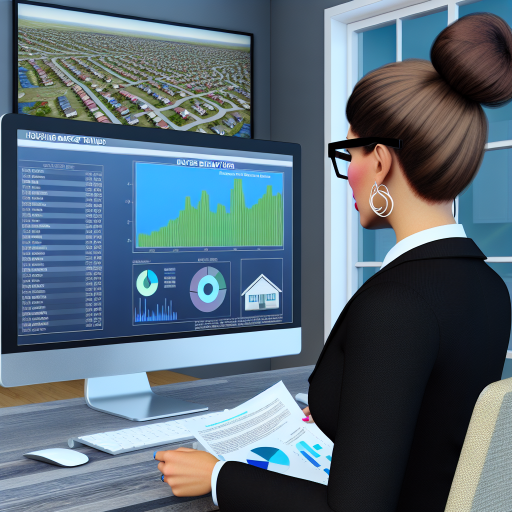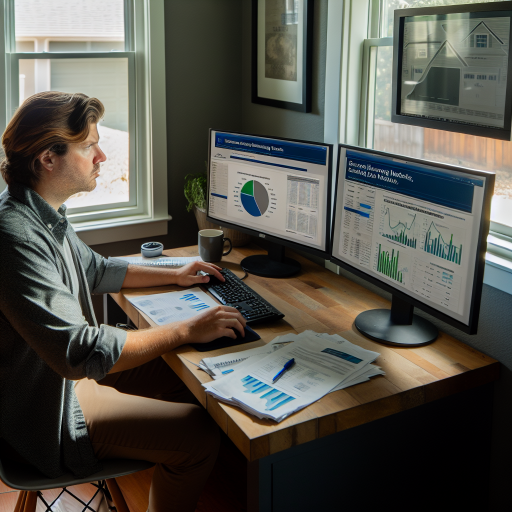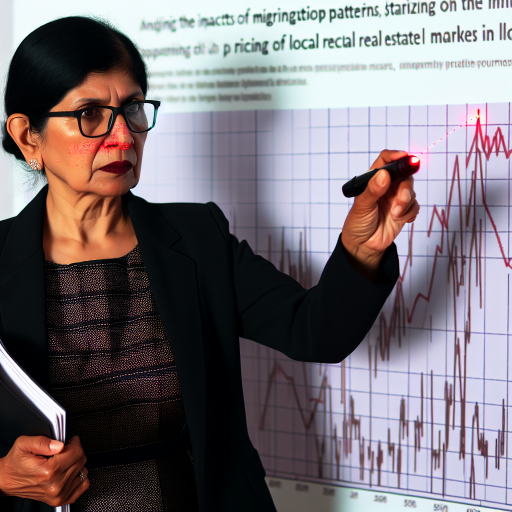Defining Mixed-Use Developments
Mixed-use developments combine residential, commercial, and cultural spaces in one area.
This approach fosters a vibrant and integrated community atmosphere.
Developers prioritize convenience and accessibility for residents and visitors alike.
In essence, these projects aim to create a lively urban experience.
Key Characteristics
First, mixed-use developments often incorporate residential units, such as apartments or condos.
Secondly, they include commercial spaces, like shops and restaurants.
Additionally, they may feature office spaces for businesses.
Some developments also include parks or recreational facilities.
Benefits of Mixed-Use Developments
These projects promote walkability by reducing dependence on cars.
They encourage social interaction among diverse groups of residents.
Moreover, mixed-use developments can boost local economies.
Increased foot traffic benefits shops and services in the area.
Design Elements
Design plays a crucial role in the success of mixed-use developments.
Architects often focus on creating functional and appealing layouts.
Public spaces, such as squares or plazas, often enhance community engagement.
Transform Your Real Estate Decisions
Unlock personalized real estate insights crafted just for you. Get actionable advice designed to amplify your success.
Get StartedAdditionally, buildings are designed to blend seamlessly into the surrounding environment.
Examples in Action
One notable example is the Hudson Yards in New York City.
This project features residential units, offices, and retail space.
Another example is The Grove in Los Angeles, which mixes shopping and entertainment.
These projects highlight the effectiveness of mixed-use designs.
The Rise in Popularity of Mixed-Use Developments
Key Factors Driving Change
Mixed-use developments are rapidly gaining popularity across urban landscapes.
This trend stems from several interrelated factors influencing city planning.
First, changing lifestyle preferences shape how communities evolve.
People increasingly favor walkable neighborhoods with diverse amenities.
Next, economic factors also contribute significantly to this shift.
Investors see mixed-use projects as safer, more lucrative investments.
Additionally, these developments maximize land use in crowded cities.
Urban planners highlight the benefits of integrating living, working, and leisure spaces.
This integration fosters community interaction and reduces dependence on cars.
Showcase Your Real Estate Business
Publish your company profile on our blog for just $200. Gain instant exposure and connect with a dedicated audience of real estate professionals and enthusiasts.
Publish Your ProfileFurthermore, sustainability plays a critical role in this trend.
Mixed-use developments often incorporate eco-friendly practices and designs.
They promote energy efficiency and reduce carbon footprints effectively.
Moreover, social factors influence the creation of mixed-use spaces.
Communities thrive when they provide ample social interaction opportunities.
These developments encourage local businesses and enhance economic vitality.
Moreover, they facilitate access to public amenities like parks and transportation.
As cities grow, so does the need for innovative solutions to urban challenges.
Mixed-use developments represent a forward-thinking approach to urbanization.
Ultimately, the trend reflects a broader shift in societal values and priorities.
People seek convenience, community, and sustainability in their living environments.
Economic Benefits of Mixed-Use Developments
Boosting Local Economies
Mixed-use developments drive significant economic benefits for local communities.
They integrate residential, commercial, and recreational spaces within a single area.
As a result, they create vibrant neighborhoods that attract diverse populations.
This diverse mix supports local businesses and enhances overall economic growth.
Moreover, mixed-use developments encourage job creation across various sectors.
People working, living, and shopping in the same area fosters economic activity.
Additionally, these developments often increase property values in surrounding areas.
With increased demand, local businesses experience higher foot traffic.
Consequently, this leads to increased sales and profitability for small businesses.
Local governments also benefit through higher tax revenues.
This additional funding supports community services and infrastructure improvements.
Furthermore, mixed-use areas promote efficient use of land and resources.
This efficiency can lead to reduced infrastructure costs over time.
Encouraging Sustainability
Mixed-use developments align with sustainable development goals.
They reduce reliance on cars by promoting walkability and public transport access.
Residents can easily access shops, restaurants, and services within walking distance.
Consequently, this model contributes to lower carbon emissions.
In addition, shared spaces allow for sustainable landscaping and energy use.
Mixed-use designs often prioritize green building practices.
Showcase Your Real Estate Business
Publish your company profile on our blog for just $200. Gain instant exposure and connect with a dedicated audience of real estate professionals and enthusiasts.
Publish Your ProfileThis prioritization further enhances the environmental benefits of such developments.
Strengthening Community Bonds
Mixed-use developments foster a sense of community among residents.
These spaces encourage social interactions and community events.
Local cafes and parks serve as gathering spots for residents.
Such interactions help build relationships and strengthen local networks.
Furthermore, a sense of community enhances local safety and security.
Neighbors who know each other are more likely to look out for one another.
Ultimately, these developments create stronger, connected communities.
Explore Further: Understanding The Impact of Zoning Laws on Housing Market Supply
Community and Lifestyle Advantages
Creating Vibrant Urban Environments
Mixed-use developments transform urban landscapes into lively communities.
They integrate residential, commercial, and recreational spaces.
This blend fosters interaction among residents and businesses.
Moreover, it encourages a sense of belonging and community pride.
Improving Accessibility and Convenience
These developments enhance accessibility to essential services.
Residents find shops, cafes, and parks within walking distance.
This setup reduces reliance on vehicles, promoting sustainable transportation.
Consequently, it lowers traffic congestion and pollution levels.
Boosting Local Economies
Mixed-use spaces contribute significantly to local economies.
They attract diverse businesses, generating job opportunities.
Additionally, vibrant community hubs encourage local spending.
This investment benefits residents and fosters economic development.
Encouraging Healthy Lifestyles
These environments promote an active lifestyle.
Access to parks encourages outdoor activities and social interaction.
Furthermore, nearby fitness centers support community wellness efforts.
This holistic focus on health improves overall quality of life.
Preserving Social Equity
Mixed-use developments prioritize social equity in urban design.
They often include affordable housing options within their frameworks.
This approach helps create inclusive communities for all income levels.
Such diversity enriches the urban experience and strengthens neighborhoods.
Uncover the Details: How Technology Is Shaping Homebuyer And Seller Market Expectations
Showcase Your Real Estate Business
Publish your company profile on our blog for just $200. Gain instant exposure and connect with a dedicated audience of real estate professionals and enthusiasts.
Publish Your ProfileSustainability in Mixed-Use Developments
Environmental Benefits
Mixed-use developments offer significant environmental advantages.
They reduce urban sprawl by optimizing land use.
Consequently, these spaces encourage walkability among residents.
As a result, reliance on cars decreases, lowering carbon emissions.
Such projects also contribute to enhanced air quality.
Green spaces within these developments promote biodiversity.
They facilitate the absorption of rainwater, mitigating flooding risks.
In addition, mixed-use developments foster community interaction.
This setup encourages shared resources and public transport use.
Sustainable Practices
Implementing sustainable practices is vital in these projects.
Using energy-efficient building materials significantly reduces energy consumption.
Incorporating renewable energy sources, like solar panels, enhances efficiency.
Water conservation methods, such as rainwater harvesting, are beneficial.
Moreover, waste reduction strategies can significantly lower landfill impact.
Designing for flexibility encourages long-term usability of spaces.
Furthermore, developers often prioritize local sourcing of materials.
Community engagement allows for feedback on sustainable design choices.
Case Studies
Successful examples of mixed-use developments highlight their potential.
In Seattle, The Bullitt Center stands out for its green design.
This project features a net-zero energy use goal for sustainability.
Another example is The Eastside City Park in San Diego.
This area integrates residential, commercial, and recreational spaces innovatively.
These case studies illustrate how mixed-use developments can thrive.
Future Trends
As urbanization continues, mixed-use developments gain traction.
More cities are embracing this innovative approach to development.
Future projects will likely focus on resilience against climate change.
The integration of smart technology will enhance sustainability efforts.
Mixed-use developments are paving the way for greener cities.
Learn More: How Economic Factors Impact the Housing Market in Different States

Challenges in Implementing Mixed-Use Developments
Regulatory Considerations
Regulatory frameworks often hinder the development of mixed-use projects.
Showcase Your Real Estate Business
Publish your company profile on our blog for just $200. Gain instant exposure and connect with a dedicated audience of real estate professionals and enthusiasts.
Publish Your ProfileZoning laws may limit the types of activities permitted in specific areas.
Additionally, strict land-use regulations can complicate planning efforts.
Building codes also vary significantly by location, impacting designs.
These regulatory challenges require thorough research and careful navigation.
Design Considerations
Designing mixed-use spaces requires a balance of functionality and aesthetics.
Creating an inviting atmosphere is essential for attracting diverse users.
Accessibility plays a crucial role in the design phase.
It is important to ensure ease of movement between different areas.
Sustainability needs to be a priority in design choices.
Incorporating green spaces enhances both the environment and user experience.
Collaborative design processes often yield the best results.
Engaging community input can lead to more successful developments.
Financial Challenges
Financing mixed-use developments can be complex and challenging.
Investors may have concerns about ROI in mixed-use projects.
Furthermore, securing funding from diverse sources is often necessary.
This can involve navigating different financial markets and products.
Continued economic uncertainty may also affect investor confidence.
Community Integration
Successful mixed-use developments need to integrate seamlessly into their communities.
Understanding community needs is critical for project viability.
Engaging with local stakeholders enhances acceptance and support.
Moreover, addressing concerns about gentrification is crucial.
Building trust requires transparent communication throughout the process.
Delve into the Subject: A Deep Dive Into Regional Housing Market Trends for Investors
Case Studies: Successful Mixed-Use Developments Across Major Cities
Mixed-Use Development in San Francisco
The Salesforce Transit Center exemplifies innovation and design in San Francisco.
This project combines public transportation with retail, office, and community space.
It fosters connectivity while promoting vibrant urban life.
Visitors and locals enjoy green spaces and a rooftop park for relaxation.
Additionally, it integrates sustainability features, such as solar panels.
Chicago’s Revitalization Effort
The Fulton Market District showcases successful mixed-use development in Chicago.
This area blends warehouses and innovative new buildings seamlessly.
Showcase Your Real Estate Business
Publish your company profile on our blog for just $200. Gain instant exposure and connect with a dedicated audience of real estate professionals and enthusiasts.
Publish Your ProfileRestaurants, shops, and residential spaces attract a diverse crowd.
Moreover, it enhances pedestrian accessibility throughout the neighborhood.
Community involvement during planning ensured local needs were met.
New York City’s Urban Transformation
The Hudson Yards project represents a significant shift in New York City.
This sprawling development unites residential, commercial, and recreational spaces.
It incorporates art installations and green roofs, promoting a vibrant atmosphere.
Additionally, the High Line park attracts countless visitors year-round.
Such projects reshape urban life, encouraging community interaction.
Toronto’s Diverse Offerings
The Evergreen Brick Works exemplifies Toronto’s mixed-use potential.
Once an industrial site, it now serves as a community hub.
This development includes farmers’ markets, trails, and event spaces.
It successfully integrates environmental education with recreational facilities.
Therefore, it stands as a model for sustainable urban development.
International Example: London’s King’s Cross
King’s Cross is a major mixed-use development in London.
This project combines residential, commercial, and cultural spaces.
Through thoughtful planning, it preserves historical elements while modernizing.
Public spaces enhance community engagement and social interaction.
Moreover, it features educational institutions and innovative workspaces.
Impact of Mixed-Use Developments
Mixed-use developments significantly change urban landscapes worldwide.
They contribute to economic growth and a sense of community.
Moreover, these spaces encourage sustainability and reduce urban sprawl.
As cities evolve, these developments will continue to play a vital role.
Ultimately, they create more livable and functional urban environments.
The Future of Urban Planning: Trends and Predictions for Mixed-Use Developments
Shifting Urban Dynamics
Urban areas are evolving rapidly due to demographic changes.
People increasingly prefer living, working, and playing in close proximity.
Mixed-use developments cater to this desire by combining residential, commercial, and recreational spaces.
This integration fosters vibrant communities and promotes social interactions.
Environmental Considerations
Mixed-use developments offer significant environmental benefits.
They promote sustainable living by reducing reliance on cars.
Furthermore, compact designs minimize land consumption and preserve green spaces.
Showcase Your Real Estate Business
Publish your company profile on our blog for just $200. Gain instant exposure and connect with a dedicated audience of real estate professionals and enthusiasts.
Publish Your ProfileAs urban areas become greener, biodiversity and quality of life improve.
Economic Advantages
Investing in mixed-use developments promises economic growth and diversification.
These projects attract a diverse range of businesses, enhancing local economies.
Additionally, they increase property values and stimulate job creation.
Residents benefit from greater access to amenities and services.
Community Building and Engagement
Mixed-use developments foster a sense of community among residents.
Shared spaces encourage socialization and collaboration.
These projects often include public gathering areas, promoting local events and activities.
As a result, they cultivate stronger community ties and a shared identity.
Future Trends in Urban Planning
Urban planners are increasingly prioritizing mixed-use developments in their strategies.
Innovative technologies play a role in enhancing these spaces through smart design.
Incorporating flexible spaces allows for future adaptations as needs change.
Moreover, sustainable construction methods are becoming the norm.
Urban Planning Implications
The future of urban planning is clearly heading toward mixed-use developments.
As trends shift, cities will become more livable and interconnected.
This evolution allows for safer, healthier, and more enjoyable urban environments.
Ultimately, mixed-use developments are a key strategy for sustainable urban growth.
Additional Resources
Social and Cultural Contexts of Alcohol Use: Influences in a Social …
Experts Say the ‘New Normal’ in 2025 Will Be Far More Tech-Driven …




